Shelach 2022: Giants vs. Giant Sins
by devadmin | June 23, 2022 8:06 pm
Raboyseyee and Ladies,
We begin with huge mazel tov wishes to our friends Carine and Bruce Schneider upon the upcoming wedding -this coming Sunday – of their beautiful daughter Nicole, who will be escorted to the chuppah to marry David Solomon, he the son of Shevy and Edward Solomon, they of Englewood, New Jersey. Mazel tov to both extended families. May Nicole and David merit to enjoy many decades of blissful marriage and be a source of great joy to their families. The heylige Ois and eishes chayil are looking forward to participating in this great simcha.
———————————————————————————————————————
Giants vs. Giant Sins
Megalophobia is a type of anxiety disorder in which a person experiences intense fear of large objects. A person with megalophobia experiences intense fear and anxiety when they think of, or are around large objects such as large buildings, statues, animals and vehicles. Were the miraglim (spies) suffering from megalophobia?
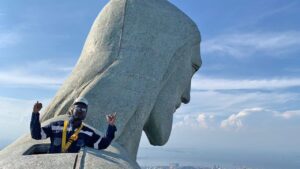
Along with giant sins -seemingly punishable by death- this week’s parsha features giants, perhaps even real ones. It does? Is this emes? Who were these giants? What role did they play? Does the heylige Toirah mamish believe in giants? And what are giants -if they existed- doing in our parsha? More on them below but let us begin here:
Vey iz mir (woe is to me and yikes): things are not going well for What’s the Yiddin. The news in our parsha is worse -what could be worse? – than what we read just last week? Once again, the RBSO is not happy with His Chosen People. Parshas Shelach recounts the famous myseh of the meraglim and the loshon horo (badmouthing) they spoke of the Promised Land. Unlike Miriam who -in last week’s parsha- got away with a mild case of leprosy as punishment for her loshon horo, the actions of the meraglim brought about an instant reaction: The RBSO declared that the Yiddin would -instead of making a quick trip across the desert into the promised land- end up trekking through it for 40 years before entry. Moreover, all males above twenty -guilty and innocent alike- would die over the ensuing years. Nu, given such news, and with much time on their hands, the Yiddin found new ways to occupy themselves and were soon embroiled in additional mischief, moving almost seamlessly from one set of troubles into another. The sad details are unveiled as we make our way through Sefer Bamidbar. Along the way, the RBSO will continue to thin out the male population. What’s pshat thinning out? Bluntly stated: the RBSO was going to kill many- like in thousands- until all those that He had intended to leave behind will have died in the Midbar. In the end, very few males -over 20 at the time of the decree- would make it over to the Promised Land; not even Moishe. Nu, could it be more depressing? As stated above, vey iz mir and Yikes!!
Is there any good news? Yes! A sliver of a silver lining: some might even say the news is mamish oisergevayntlich (outstandingly good). After reading about the meraglim and the “mikoishesh eytzem” (the fellow tending to his wood on shabbis), this episode found in the closing pisukim of the parsha, and as you make your way through the rest of Sefer Bamidbar, you might come to the conclusion that no matter how giant your personal list of chatoim (grievous sins) is, you’re not so giferlich an oisvorf as you yourself -and many others- believe. In fact, you are not at all such a terrible person. And guess what? You might taka be right! Compared to the less than exemplary behavior of the Yiddin (at least a portion of them) during their 40-year Midbar experience, you might be quite the tzaddik!
And with that less than cheerful introduction let’s quickly, in one paragraph, efsher two, review the entire episode. With the RBSO’s permission (or, as we will learn later this summer – at the insistence of the Yiddin themselves), Moishe sends 12 Miraglim (spies or scouts), one from each sheyvet (tribe), to check out the Promised Land of K’nan. Prophetically sensing trouble, Moishe, changes Hoshea’s name to Yehoshua, expressing a prayer that the RBSO not let him fail in his mission. As you can only imagine, the medrish is replete with myriad interpretations on this name change; those for another time, and all previously covered over the past 12 years. 40 days later they return carrying unusually large fruit. 10 of the 12 spies state that the people in K’nan are as formidable -they spotted giants- as the fruit they just smuggled over the border. Bottom line: when it comes to proportional vs oversized fruits, or anything else, larger is not always desirable, if you chap. The spies decided it was best for the Yiddin not to engage in warfare with the giants they encountered.
They encountered giants mamish? The Yiddin quickly lost faith in the RBSO and began crying like little children. The RBSO, not at all pleased with the crybabies, declared (according to the medrish) that a time will come- namely Tisha Be’av- when the Yiddin will have good reason to cry. How Tisha Be’av is related to our parsha, very veyst, ober the medrish weaves the stories together. After twelve years of Ois posts, you know this: medrish has literary license and case closed. Veyter: The Yiddin are mamish depressed. Kolave and Yehoshua, the two good guys, try but fail to bolster the people’s spirit. Too late! The Yiddin are petrified and nervous about war against the Land’s inhabitants and demand a return to Mitzrayim where they had shelter, an expanded menu of watermelon, fish and meat, hot shiksa Mitzri women -seemingly many- and other good times. Hey, didn’t we learn that the Yiddin had sunk down to the 49th level of tumah (impurity immorality and shmutz)? Yes, we did! Mistama they got there by laying more than just bricks, if you chap. Bottom line: After 210 years of slavery, it would take an extended block of time to break them out of that mentality. The RBSO was avada fed up with His people and told Moishe that He would like to wipe them out and start all over again (not the first time this has been suggested) using Moishe as the master seed. Ober Moishe davened and as a result of his fervent prayers, talked the RBSO down –metaphorically avada. Once again, he saved the nation from annihilation. Though their lives were saved, the RBSO did not give the Yiddin a free pass and instead decreed they must remain in the Midbar (desert) for 40 years in total, one year for each day of the spy mission. Shoin, as mentioned above, they but went on to commit many more transgressions. Next: A renegade and remorseful group rashly began an invasion of the Land based on the RBSO’s original command. Moishe warned them not to proceed, but they are Yiddin and Yiddin are not good at taking orders from leaders. Has any Rabbi you know successfully and totally stopped talking in shul? The kiddush club? Not! The bottom line: Yiddin don’t listen, and act impetuously! The Yiddin didn’t listen to Moishe and were massacred by the Amalekites and Canaanites. There were dead Jews all over the place. The end!
Ober let’s get back to the giants. When the Yiddin returned, they told Moishe that they encountered the “Niphilim” (the giants). The who? Let’s read posik 28 (second aliya) innaveynig:
| 28. However, the people who inhabit the land are mighty, and the cities are extremely huge and fortified, and there we saw even the offspring of the giant. | כחאֶ֚פֶס כִּי־עַ֣ז הָעָ֔ם הַיּשֵׁ֖ב בָּאָ֑רֶץ וְהֶֽעָרִ֗ים בְּצֻר֤וֹת גְּדֹלֹת֙ מְאֹ֔ד וְגַם־יְלִדֵ֥י הָֽעֲנָ֖ק רָאִ֥ינוּ שָֽׁם |
They saw who and what? The offspring of the giant? Which giant? Earlier we asked if the heylige Toirah believes in giants. And the answer is yes! In fact, one of the sins attributed to the spies is that they spoke badly about the land they had explored. “We saw Niphilim there.” Let’s read one more posik (Bamidbar 13:33).
| 33. There we saw the giants, the sons of Anak, descended from the giants. In our eyes, we seemed like grasshoppers, and so we were in their eyes. | לגוְשָׁ֣ם רָאִ֗ינוּ אֶת־הַנְּפִילִ֛ים בְּנֵ֥י עֲנָ֖ק מִן־הַנְּפִלִ֑ים וַנְּהִ֤י בְעֵינֵ֨ינוּ֙ כַּֽחֲגָבִ֔ים וְכֵ֥ן הָיִ֖ינוּ בְּעֵֽינֵיהֶֽם: |
Says Rashi, that Niphilim refers to “giants, the descendants of [the angels] Shamchazai and Aza’eil, who fell from heaven in the generation of Enosh.” Mamish azoy? Sham who? Where did they come from? If these guys were the descendants, just who were the first giants? The giants the meraglim sighted, seemingly outlived all others and were still around in the land of K’nan? Let’s find out. As it turns out, we have previously met these Niphilim guys and let’s harken back to Bereishis (6:1-4) where we read azoy:
| 1. And it came to pass when man commenced to multiply upon the face of the earth, and daughters were born to them. | אוַיְהִי כִּי הֵחֵל הָאָדָם לָרֹב עַל פְּנֵי הָאֲדָמָה וּבָנוֹת יֻלְּדוּ לָהֶם: | |
| 2. That the sons of the nobles saw the daughters of man when they were beautifying themselves, and they took for themselves wives from whomever they chose. | בוַיִּרְאוּ בְנֵי הָאֱלֹהִים אֶת בְּנוֹת הָאָדָם כִּי טֹבֹת הֵנָּה וַיִּקְחוּ לָהֶם נָשִׁים מִכֹּל אֲשֶׁר בָּחָרוּ: | |
| 3. And the Lord said, “Let My spirit not quarrel forever concerning man, because he is also flesh, and his days shall be a hundred and twenty years.” | גוַיֹּאמֶר יְהֹוָה לֹא יָדוֹן רוּחִי בָאָדָם לְעֹלָם בְּשַׁגָּם הוּא בָשָׂר וְהָיוּ יָמָיו מֵאָה וְעֶשְׂרִים שָׁנָה: | |
| 4. The Nephilim were on the earth in those days, and also afterward, when the sons of the nobles would come to the daughters of man, and they would bear for them; they are the mighty men, who were of old, the men of renown. | דהַנְּפִלִים הָיוּ בָאָרֶץ בַּיָּמִים הָהֵם וְגַם אַחֲרֵי כֵן אֲשֶׁר יָבֹאוּ בְּנֵי הָאֱלֹהִים אֶל בְּנוֹת הָאָדָם וְיָלְדוּ לָהֶם הֵמָּה הַגִּבֹּרִים אֲשֶׁר מֵעוֹלָם אַנְשֵׁי הַשֵּׁם: |
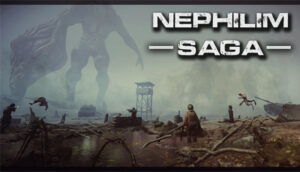
Did you read posik 4? No? Go back and read it now! The heylige Toirah tells us that the Niphilim were then on the earth. The Niphilim had either fallen down from heaven or descended to earth, whatever either pshat may mean, ver veyst? How did this come about? Some say that two malochim (angels) in a discussion with the RBSO, suggested they could withstand earthly temptations and live sin-free with the people below, as do the angels up in heaven. Shemhazai was one of the outspoken angels. As an aside medrish will teach us that Oig may have been a grandson of the malach (angel) Shemhazai. Seemingly they came down with earthly bodies. Nu, with earthly bodies they quickly behaved as do humans; very soon thereafter, they were involved in chazerish behavior. They were chapping and bedding -as stated in posik 3 above- many women, with and without consent. The first ever sexual predators? Yikes! In the end, they were unable to withstand the many temptations of this world, and fell from their spiritual heights. Bottom line: what chance do we have if malochim couldn’t make it down here? Oy vey! Ober says the medrish, azoy: “Niphilim” literally means fallen ones. They were actually fallen (but not rebellious) angels – who begat a race of physical giants. The Nephilim were physically superior to common man. They were a mighty group and in our parsha (13:33) the spies claim that they felt like grasshoppers before the Nephilim who then inhabited the Land of Israel.
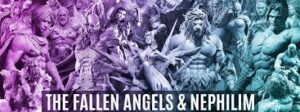
Veyter. Whomever they were and however they go there, their offspring were known as the b’nai Anok, the giants, that are described in posik 4. Shoin, since we mentioned Oig or Og, perhaps the most well-known giant of them all (aside from Big Gidalya Goomber), you should also know this factoid: Oig was seemingly from a family that started off as half angel and half human; perhaps that would account for his unusual height? How tall was he? Nu, that depends on how we interpret the words of the heylige Toirah as found in Parshas Devorim and which tells us azoy: His bed was made of iron. Why iron? Seemingly the wood could not support his frame.” Nine cubits was its length and four cubits its breadth, according to the cubit of the man. How large is a cubit? That depends on whom you ask, ober according to all, Oig was very tall. Some say he was just shorter than his bed which was nine cubits long, others say he was much taller. In height, some have him at only 9 plus feet, others at over 18 feet tall. Certainly, he was over 5′ 10”, the size of a tallish average Jewish male. Shoin, where were we? Big Gidalya Goomber? Remember him? Not? The song about the gentle giant who wouldn’t work on the heylige shabbis was originally released in 1969 and re-released by Uncle Moishe years later. Check out the original lyrics here: https://jewishmusicalnotes.com/2021/03/03/big-gedaliah-goomber-1969/
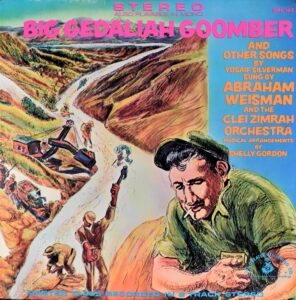
The bottom line: The meraglim were seemingly terrified of the giants they sighted. They reported back -as we read in the parsha (13:32-33) on their fears. “The country that we traversed and scouted is one that devours its settlers. All the people that we saw in it are men of great size; we saw the Nephilim [giants] there — the Anakites are part of the Nephilim [giants]— and [compared to them] we looked like grasshoppers to ourselves, and so we must have looked to them.” The Yiddin responded with communal despair, which is described as follows:
“The whole community broke into loud cries, and the people wept that night. All the Israelites railed against Moishe and Aharoin. ‘If only we had died in the land of Egypt,’ the whole community shouted at them, ‘or if only we might die in this wilderness! Why is the [Eternal] taking us to that land to fall by the sword? Our wives and children will be carried off! It would be better for us to go back to Egypt!’” (Bamidbar 14:1-3.)
Says Rashi azoy: the Anakites were given such a name because they were so tall that they obscured (maanikim) the view of the sun. Chazal tell us the word ענק means that they shadow the sun with their height. ילידי הענק שמעניקין חמה בקו. And says the heylige Gemora (Soita 35a), azoy: the meraglim, frightened by the enormity of the Anakites, climbed up on trees in search of shelter. Next: as the spies were sitting atop the trees, they heard the Anakites wondering -from below- about the origins of these creatures who resembled ants due to their small size and who were hiding in their vineyards. Ask the Ois azoy: for expressing such fear they were sentenced to a horrible death? Wouldn’t you be afraid were you to encounter giants roaming about the neighborhood you were considering for your primary or even vacation home? And the Yiddin were sentenced to 40 years in the midbar? What’s taka pshat?

Centuries later, our sages of the heylige Gemora and medrish pored over their words and added colorful and creative background information about the meraglim in order to make the RBSO’s mortal punishment understandable. After all, weren’t the spies but offering their honest analysis? Weren’t they entitled to communicate their fears about the odds of engaging a not-yet-ready for prime-time group of former slaves in a conquest against giants? Why would the RBSO -ever so righteous- strike down messengers for the crime of communicating disappointing news? Whatever happened to the old axiom ‘don’t shoot the messenger’? A number of sages insult the spies -though hand-picked by Moishe and described as princes- accusing them of being fools and slanderers. Ober, let’s check out the medrish (Medrish Rabbah 16:11) where our sages unpack the true crime the spies committed. “When the spies said, ‘And we were in our own sight as grasshoppers,’ the RBSO observed: ‘I shall forgive them this remark.’ But when they said:’ And so we were [as grasshoppers] in their sight,’ the RBSO asked: ‘Did you know how I made you appear in their sight? Who can say that you did not appear in their sight as angels? What have you brought upon yourselves?’” The bottom line: we can only know how we see ourselves. When we assume that others think poorly of us, when we assume that others have malevolent intentions, when we assume that others disregard the beauty of our spirits, we make grave mistakes. Were the meraglim punished for having low self-esteem? Were the meraglim punished for spreading fake news? Not a bad lesson for our times. And for weakening the spirit of those who listened? And were the Yiddin -as a whole- punished for listening and absorbing the fake news? Es ken zeyn (could be)! Another bottom line: who are we to chap specifically what bothered the RBSO? One thing is zicher: bothered He was.
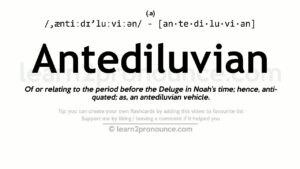 But wait: there’s more: The heylige Toirah and the Novee talk about giants in pre (or antediluvian, zelba zach) and in Biblical times. In the times of Noiach, Moishe, and Dovid Hamelech (King David), we read of them. What are their origins and what happened to them? The heylige Toirah has a three-fold tension with giants, recurring at three key moments in the rich history of the Yiddin. We find giants again -here in our parsha- and later in Devorim when Moishe needs to do battle with the giants of the land. Shoutout to Sichoin and Oig! Later in the Novee as vividly described in Shmuel, Melochim and Divrei Hayomim (Samuel, Kings and Chronicles), Dovid Hamelech and his great warriors slew the last of these foes. Ober, lest you also recall and wish to compare Greek Mythology where giants are featured, banish the thought: let us not forget the key difference between our wars with the giants and those of other mythologies. The Greek Titans were defeated by Zeus, the Frost Giants were constantly fought by Thor and Odin. Ober, in in our stories, the giants are fought by normal human beings. Why the heylige Ois know this tidbit of Greek mythology, ver veyst?
But wait: there’s more: The heylige Toirah and the Novee talk about giants in pre (or antediluvian, zelba zach) and in Biblical times. In the times of Noiach, Moishe, and Dovid Hamelech (King David), we read of them. What are their origins and what happened to them? The heylige Toirah has a three-fold tension with giants, recurring at three key moments in the rich history of the Yiddin. We find giants again -here in our parsha- and later in Devorim when Moishe needs to do battle with the giants of the land. Shoutout to Sichoin and Oig! Later in the Novee as vividly described in Shmuel, Melochim and Divrei Hayomim (Samuel, Kings and Chronicles), Dovid Hamelech and his great warriors slew the last of these foes. Ober, lest you also recall and wish to compare Greek Mythology where giants are featured, banish the thought: let us not forget the key difference between our wars with the giants and those of other mythologies. The Greek Titans were defeated by Zeus, the Frost Giants were constantly fought by Thor and Odin. Ober, in in our stories, the giants are fought by normal human beings. Why the heylige Ois know this tidbit of Greek mythology, ver veyst?
Ober, what happened to these giants? Didn’t the mabul (great flood) wipe all humanity save Noiach, his family and selected animals? How did the giants survive only to reappear here in our parsha? Moreover, weren’t the giants mentioned in Bereishis bad guys? Weren’t they the original sexual predators? Even before the first ever yeshiva rebbe went rogue? Wasn’t their wickedness -chapping any woman they so desired- one of the main reasons the RBSO saw fit to destroy the earth? Why did the RBSO allow them to remain? And the answer is azoy: ver veyst?! What we know with certainty is this: the heylige Gemora and medrish are replete with theories on Oig’s (the giant) survival but all agree that he did and tribes of giants are mentioned several times in connection to the conquest of the Land of Israel. In our parsha, the meraglim described themselves as feeling like grasshoppers in their presence, and the heylige Toirah -in our parsha mamish- attests to three giants (“sons of the giant [Anak]”) dwelling in Chevroin (Bamidbar 13:22). These giants were known and feared at the time. When Moishe in Devorim (9:2) assures the nation that the RBSO would conquer the Land of Canaan for them in spite of its mighty inhabitants, he describes them as “a great and lofty people, children of giants, that you knew and of whom you have heard: ” Who can stand up against the children of the giant?”
The final bottom line: specifically, which of the words the meraglim used to describe the land so angered the RBSO, we are not told. Perhaps when referring to the giants roaming about, they meant to convey that even the RBSO would be unable to conquer them, hence the entire effort would turn out to be an exercise in futility. And taka so says Rashi so logically and eloquently: what the meraglim meant to say when reporting about the giants they saw was that even the RBSO could not get them into the land. They reinforced their contention by stating that among the inhabitants were descendants of the angels “who fell from heaven in the generation of Enosh.” In other words, these were beings so powerful that even the Flood — a heavenly punishment that destroyed almost all of mankind — did not destroy them. Challenging the RBSO’s strength and resolve is not conducive to a long and healthy life on this earth. And the lessons for us -mostly under 6’ tall Yiddin? Rely on the RBSO; He can do anything.
A gittin Shabbis-
The Heylige Oisvorfer Ruv
Yitz Grossman
Source URL: https://oisvorfer.com/shelach-2022-giants-vs-giant-sins/